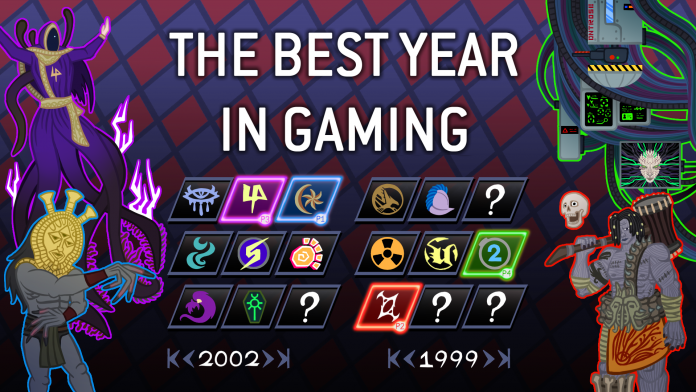Last year’s stacked lineup of games for the Game Awards had us thinking: What was the best year in gaming? As part of our series on determining gaming’s best year, we’re putting together an article on each year, charting the major releases and developments of the year, and talking about both their impact and what made them great.

The Year: 1985
The collapse of the American video game market in 1983 took nearly two full years to recover from. In the meantime, press outlets were quick to call video games a ‘passing fad,’ something we’d had our fun with and moved past. In some sense, they weren’t wrong: Americans had become exhausted by the oversaturation of bad console hardware and terrible ports (and even good ports like Duck Hunt could wear out their welcomes quickly if you paid a retail cost to own the game). If video games were to make a comeback, they’d have to address consumers’ lack of trust.
While video games had bottomed out, the same wasn’t true for tabletop games or the market for toys. In 1983 the Reagan administration’s FCC, under the direction of chairman Mark S. Fowler, removed the regulations put in place around children’s programming a decade earlier – regulations which proscribed program-length commercials in children’s TV programming and limited commercialization. The results were immediate: Broadcast networks either cut back or canceled a number of long-running educational programs, such as Captain Kangaroo and Schoolhouse Rock, and replaced them with a new slate of shows which were basically half-hour toy commercials. G.I. Joe, He-Man, My Little Pony, Thundercats – pretty much any Eighties cartoon you can name, really. The change would have a warping effect on the industry as a whole – decades later, children’s shows still live and die based not on viewership, but how well their toys are selling.
Speaking of toy sales, the best-selling toy of 1985 was Teddy Ruxpin, a plush, animatronic bear (note: in the toy’s lore he was not actually a bear) capable of playing cassette tapes as a way of telling stories to kids. Teddy Ruxpin was produced by toy manufacturer Worlds of Wonder, along with a laser tag set which was also one of the hottest toys of the year.
Why is this important? Well, as it turns out Teddy Ruxpin is in many ways responsible for the NES being stocked in US toy stores.
Having had runaway success with the Famicom in Japan and its arcade machines in the US, Nintendo wanted to bring their home console to the United States. In order to do this, a number of things needed to change. First and foremost, Nintendo had to rebrand the console, shifting it from being a “game system” or “home computer” – terms which had been properly burnt out by the prior generation of consoles – to being an “entertainment system,” or more accurately, a toy. Nintendo chose to market the console primarily to children and put strict content controls and censorship in place for US releases. In another of those “moves you don’t think about a lot but actually had massive impacts on our entire society,” they had to choose between blue and pink. Specifically, the blue and pink aisles which dominate American toy stores. Nintendo chose blue, marking the NES as a toy for boys and essentially dictating the console market for the next forty years.
Additionally, Nintendo had to address consumer confidence concerns. They introduced two major overhauls to the market: First, they mandated the NES launch games all feature accurate depictions of game graphics on their box art. Second, they introduced the Nintendo Seal of Quality, a program through which Nintendo would tightly control the licenses for NES games, testing and approving them. This would help assure customers of some baseline standard of game quality but also would mean Nintendo had the ultimate authority in later years to squeeze publishers and prevent them from releasing games on multiple platforms.
But none of this mattered when the NES debuted in New York in October 1985. What mattered was getting into toy stores and being physically stocked on shelves. Toy retailers were hesitant when it came to the budding console – they’d been burned badly in the ‘83 crash and didn’t want to stock what they viewed as another ticking time bomb. Cue Worlds of Wonder, the toy manufacturer responsible for Teddy Ruxpin and Lazer Tag. Worlds of Wonder became the exclusive distributor for the NES for its 1986 launch, and used its surging popularity to put the squeeze on toy stores, basically telling them that if they wanted to stock Teddy Ruxpin and Lazer Tag, they’d need to stock Nintendo systems as well.
Nintendo would eventually part ways with World of Wonder in late 1987 after the runaway success of the NES made their deal unnecessary but it’s wild to think that, once upon a time in America, Nintendo needed a talking bear to help establish itself.
Secret Galaxy: The Rise and Fall of Teddy Ruxpin and Worlds of Wonder, 2023
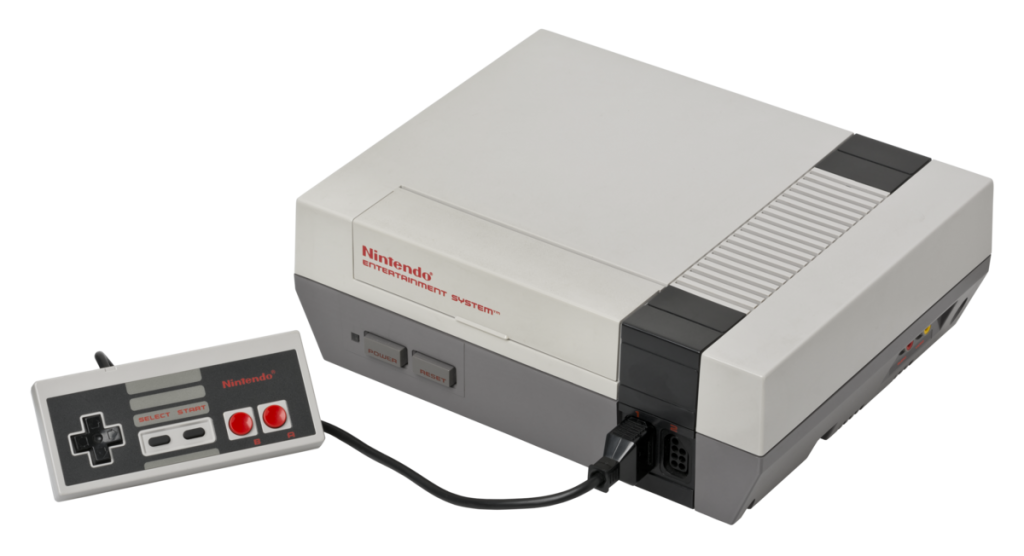
The NES Busts Out
Although most of the titles wouldn’t make their way to America until the console’s full launch in September 1986, this was the year the Nintendo Famicom got its full second wave of titles, giving us a bunch of real classics which stood the test of time more so than the arcade-style ports of 1985. That said, there were still some absolute bangers on the NES in 1985, including what may be the single most important game of all time.
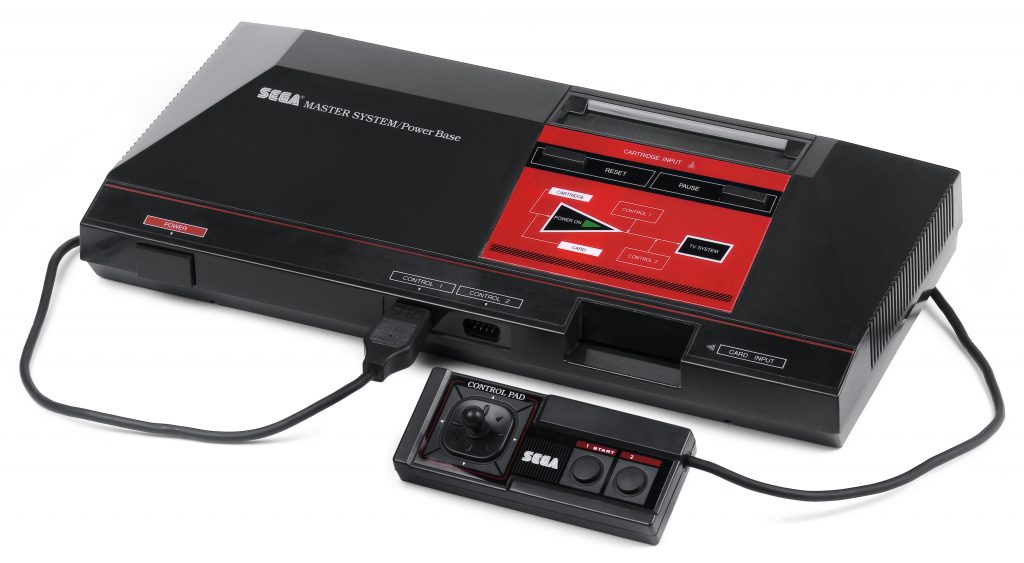
The Sega Master System Arrives
While Nintendo was making a big splash, Sega was quietly releasing its second video game console, the Sega Mark III, otherwise known as the Master System in the US and Europe. Released in competition with the NES, the Master System had superior hardware to the NES but never sniffed anything like the same success and had a comparatively much smaller library, thanks in large part to Nintendo forcing exclusivity on their partners.
The Master System may not have been competitive with the Famicom in Japan or the NES in America but it beat Nintendo to the market by a considerable margin in Europe, Australia, and South America, giving Sega a massive foothold in those regions which would pay off seven years later when the console wars were in full swing.
Fantasy Football Goes National
Fantasy football had been around since the Sixties – invented by Bill Winkenbach – but it was largely relegated to tiny local groups which spread outward from Oakland by word of mouth in the decades following, mostly to college campuses. That all changed in 1985, when Grandstand Sports Services launched the first nationally available leagues through the Q-Link service (Q-Link would later become America Online). Fantasy football would gain national acclaim in the years following and go on to be played by millions of people, growing into an industry worth billions of dollars per year.
The 386 Microprocessor Releases and IBM Takes Over
Intel launched their i386 processor in October 1985, which was in turn first used in Compaq’s Deskpro 386 (this was a bit controversial – Compaq basically beat IBM to the market with their own processor). The 386 marked the jump to 32-bit architecture for home PCs and added on-chip memory management, making it easier for operating systems to compensate for memory shortages by swapping data from RAM over to disk storage. This is pretty critical for things like multitasking and using large programs. With Macintosh sales flagging and sales for the IBM PC rising, IBM became the market leader and never looked back.
All of this was a bit of a mixed bag – while competition is usually good for consumers, having a large number of varied platforms and hardware setups was horrible for developers. Having to develop games for different PC hardware and setups made it harder to develop games for the home computer market. As the number of different personal computer platforms in the market decreased, developers were able to focus more of their efforts on a single platform with widespread adoption: The IBM PC.
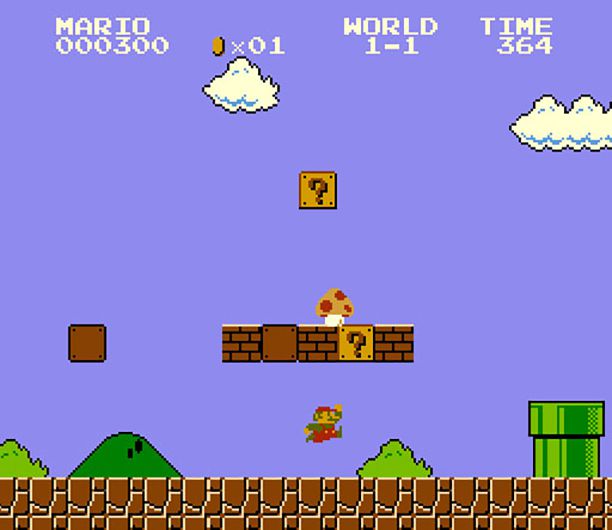
Super Mario Bros.
There’s a reason Mario is the most recognizable figure in the world: Super Mario Bros. set the bar for platforming action, kicking off what would become one of the world’s biggest franchises. It’s amazing that, even 39 years later, the game still holds up; it’s difficult but accessible, and easy enough to learn and understand that my five year-old son could pick it up and play it without needing to be able to read. Super Mario Bros. is, simply put, one of the greatest and most important games ever made.
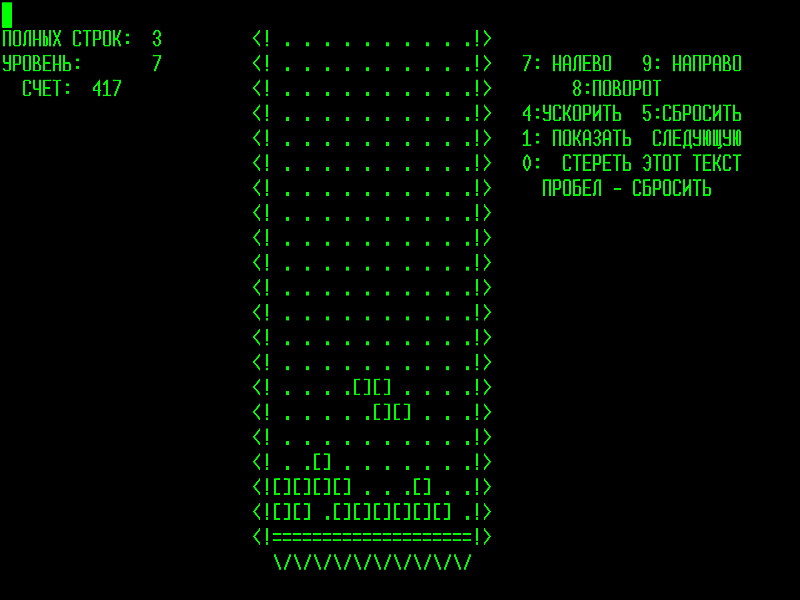
Tetris
The brainchild of Soviet software engineer Alexy Pajitnov, Tetris is another game which belongs on the Mount Rushmore of games alongside Mario. A puzzle game where you rotate blocks called ‘tetrominoes’ to stack and complete rows, Tetris is both exceedingly simple and surprisingly addictive. Tetris originally released on PC in the USSR in 1985 but only arrived in the US in 1987 after a lengthy negotiation process. To this day, it remains such a beloved game that earlier this year players were celebrating finally getting the first completed games for its NES port.
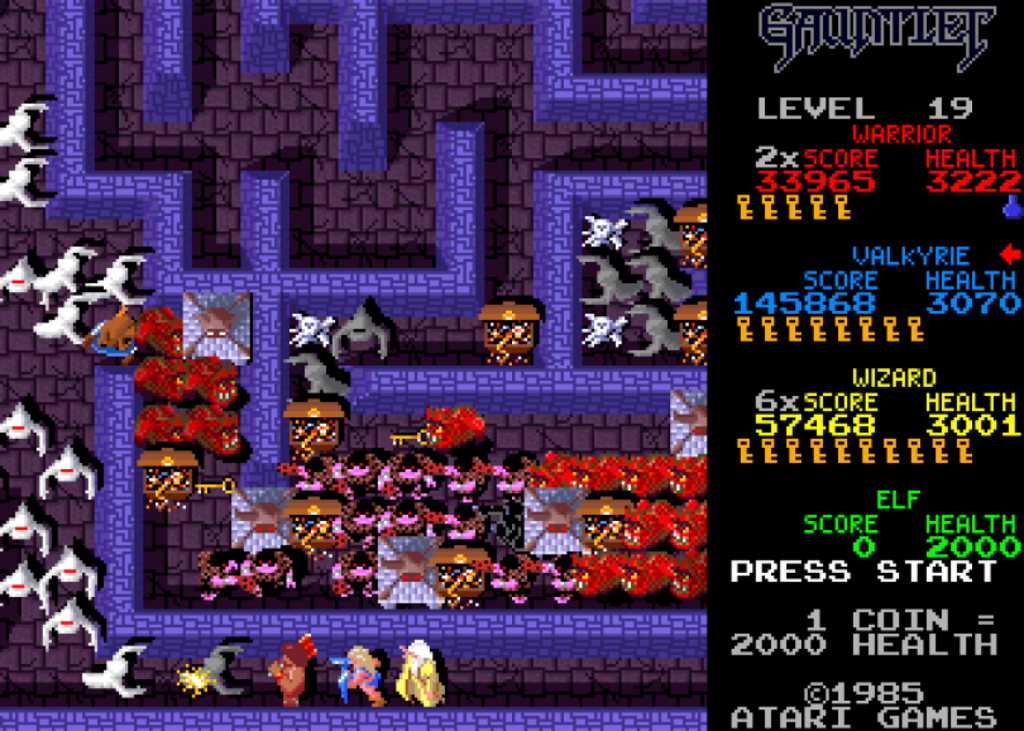
Gauntlet
Atari Games released this top-down, hack-and-slash dungeon crawler arcade game in 1985. The game released with a four-player cabinet and would see players taking on one of four roles – warrior, wizard, valkyrie, and elf – as they delved deep into a dungeon with 125 different levels. In each level players had to work together to defeat enemy monsters, collect treasure, and find the exit. And also avoid shooting the food, ideally. Gauntlet is in many ways an arcade evolution of Rogue and remains a fun time with friends and would see a number of iterations and ports in the decades following. While Diablo may have started development as a roguelike, it likely owes quite a bit to Gauntlet as well.
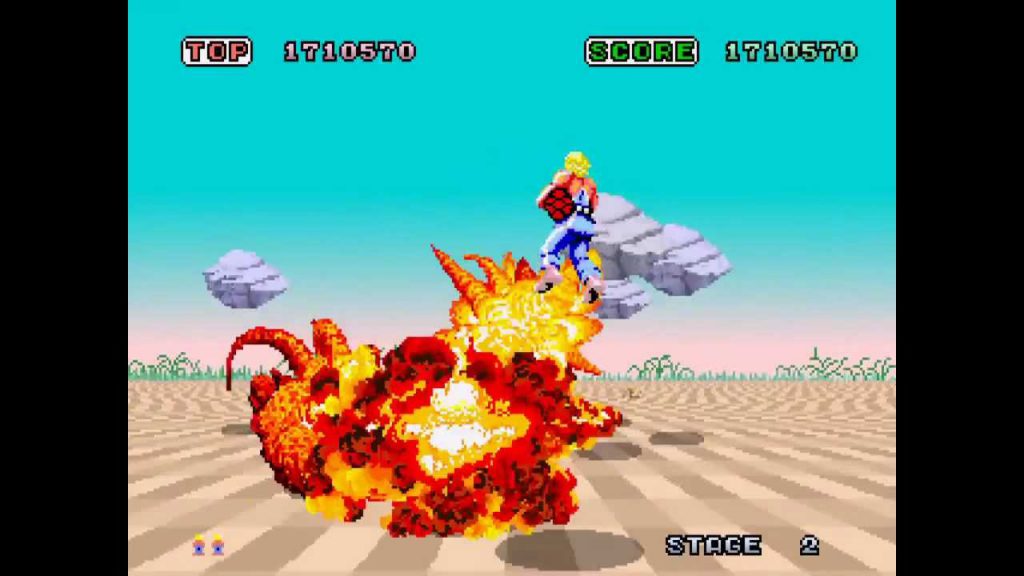
Space Harrier
Sega introduced this rail shooter arcade game in October, 1985. In Space Harrier players take on the role of a jetpack-wearing soldier zooming across sci-fi/fantasy landscapes and taking out massive monsters (most notably, one-eyed wooly mammoths). One of the first and most successful 16-bit arcade games, Space Harrier almost single-handedly birthed the rail shooter genre, and it still looks great today with its massive sprites and pseudo-3d graphics.
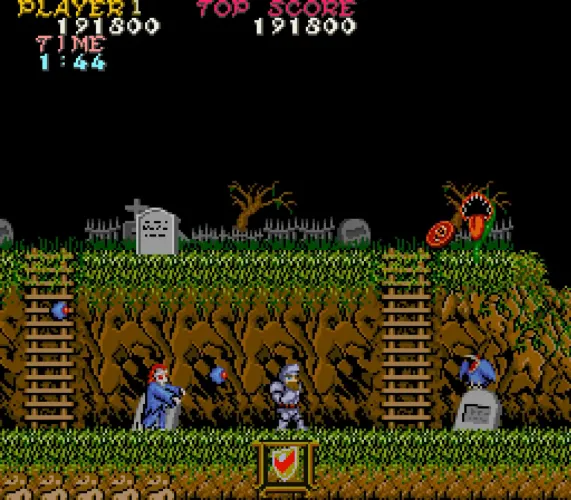
Ghosts ‘n Goblins
Capcom released the first installment of this now-storied franchise to arcades in 1985. The game saw players take on the role of Arthur, a brave knight in surprisingly-destructible armor battling his way through Satan’s army en route to saving his beloved princess. It’s a 2d sidescrolling action platformer featuring all manner of horror-themed enemies and an absolutely killer soundtrack with a catchy main theme. It’s got a well-deserved reputation for being difficult as hell, but it’s still a hauntingly good time.
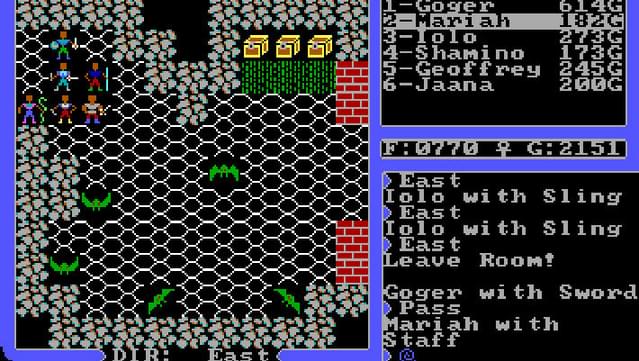
Ultima IV: Quest of the Avatar
Origin Systems released the fourth game in their Ultima series for the Apple II computer in November 1985, kicking off a new trilogy of games called the “Age of Enlightenment.” Designer Richard Garriott took a very different approach with Ultima IV from prior games, shifting things away from the previous games’ focus on dungeon crawling and monster killing, doing away with the big world-ending evil to overcome, and instead focusing on you as the character and your growth in the world as you search for the Runes of Virtue and help people. Ultima IV was the introduction to RPGs for many gamers and helped redefine what narratives in computer RPGs could look like.
Fun fact: Ultima IV helped popularize the word “Avatar” as the term for a player’s representative in a digital world.
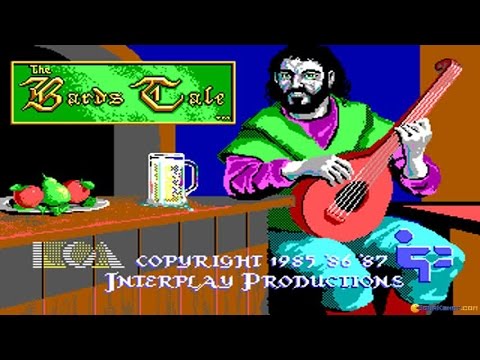
The Bard’s Tale
1985 was a big year for PC RPGs, and alongside Ultima IV was Interplay’s The Bard’s Tale, the first game in a new series of RPGs. The game is very much built off the template Wizardry created in 1981, adding color and sound to what was previously a black-and-white affair. That said, it’s more than just a Wizardry clone – it’s the first computer game to feature the bard class, musical instruments and magic songs and all. The game has you build a party of up to six adventurers on your travels, and there’s a ton of depth in there – spellcasters come in four different varieties (conjuration, magic, sorcery, and wizardry, each with their own spells), and you can swap between them as you work your way up to a fifth variety, archmage. The game isn’t without its flaws – it’s stupid hard, and way too easy to die early on when you have no healing spells and just being unlucky enough to run into some berserkers will end your run fast. Still, The Bard’s Tale is a classic which holds up with its contemporaries.

Gradius
Konami released the first entry in their side-scrolling space shooter series in 1985. It’s a game which goes heavy on power ups, giving players a mix of different weapons and additional pods/orbs to shoot with as things get crazier – and things get pretty crazy. Gradius was a pioneer in the shooter space, adding big, colorful bosses with weak points you’d need to target, and usually ways you’d have to shoot your way through a wall or obstacle to hit them. In addition to its unique power-up system and shooting action, Gradius is also known as the game which used a bunch of Moai (the heads from Easter Island) as enemies.
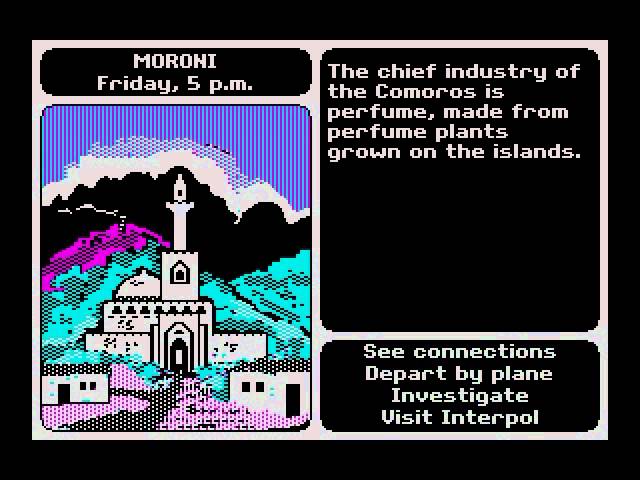
Where in the World Is Carmen Sandiego?
One of the most unlikely games to become a massive franchise, Where in the World Is Carmen Sandiego was notable not only for being one of the rare “legitimately fun educational games” but also for featuring a female villain as its main character. The game sees players taking on the role of detectives working for the ACME Detective Agency as they track down crooks from Sandiego’s V.I.L.E. organization and recover stolen goods using their knowledge of world geography. The game’s original release was for the Apple II, but it would later be ported to pretty much every kind of PC and a few consoles as well. For many, however, its biggest contribution to pop culture will always be that banger Rockapella theme song to the PBS game show based on the game.
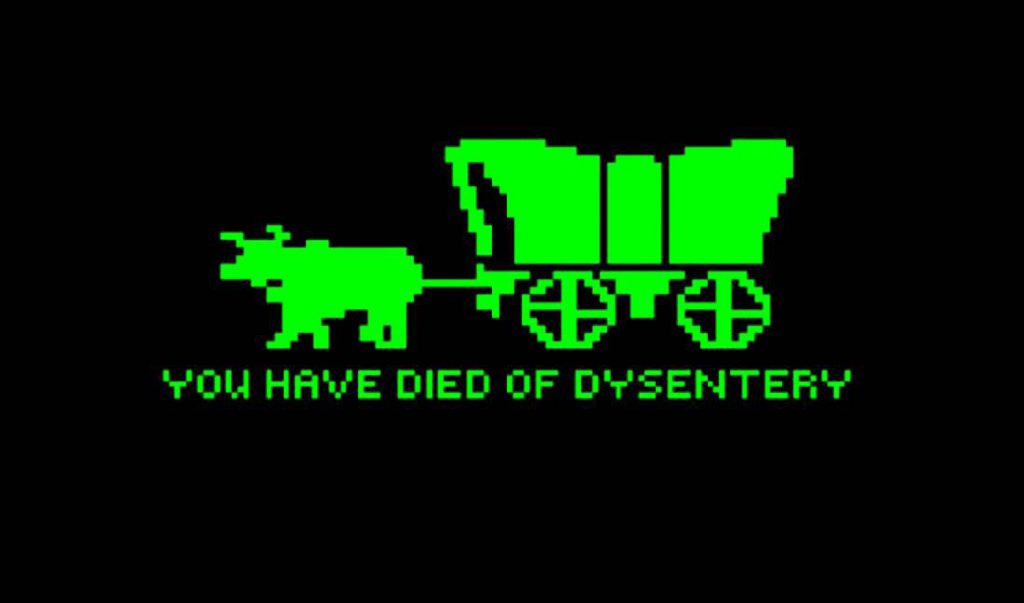
The Oregon Trail
1985 was a breakout year for educational games – or at least games which might show up on your class computer. Perhaps the most memorable of these was The Oregon Trail, a sim released for the Apple II in which players took on the role of settlers attempting to stock up on goods and take their wagon cross-country. Along the way players had to ford rivers, hunt for food, manage rations and supplies, and avoid dying of dysentery. It’s a difficult game but good at imparting the lesson that living in settler times meant dealing with some intense bullshit.

Pictionary
In 1985 Milton Bradley released Pictionary, a new take on the classic parlor game Charades. Instead of trying to pantomime concepts or objects, in Pictionary players attempt to draw them. It’s a fun game, though much of the fun comes from having everyone on roughly the same level artistically (as a professional illustrator, you would be surprised to find that people often do not want to play against me), and is at its best when players can laugh at their own horrible attempts to depict a card. The game was a huge hit on its release and remains a classic today. It’s good but not great, though its real value comes from being the kind of game whose concept can be easily explained in a single minute, letting you get any random group of people together and just hop right in.
Why It Was the Best Year in Gaming
After slogging through ‘83 and ‘84, 1985 finally gives us another real candidate for the best year in gaming, though 1986 likely has a better case – particularly if you lived in the US and didn’t get access to the NES until its wider release. Still, a number of all-time classics released in 1985, and it was clear that arcades were also starting to make a comeback as Capcom, Sega, Konami, and Nintendo released a number of instant classics which would go on to see ports on home consoles in the years following – titles like Gradius, Ghost ‘n Goblins, Space Harrier, Duck Hunt, Kung Fu, and Gauntlet were all stand-outs.
Maybe the bigger deal in gaming in 1985? The Apple II. There’s a strong case to be made for the Apple II as the gaming platform of 1985 – many of the year’s biggest games would launch on the Apple II, including many which would take years to end up on consoles. Games like The Bard’s Tale, Ultima IV: Quest of the Avatar, Oregon Trail, Where in the World is Carmen Sandiego?, and King’s Quest II were all major releases, and would be part of massive franchises down the road.
For a lot of older gamers, 1985 is the year video games really started, when arcades finally started to recover, the first Japanese consoles saw western release, and the PC gaming market finally started to take off with platforms cheap enough to actually justify having one in your home. There may have been stronger games in later years, but 1985 is one of the most formative and important years in gaming.
This article is part of a larger series on the best year in gaming. For more years, click this link. Have any questions or feedback? Drop us a note in the comments below or email us at contact@goonhammer.com.
